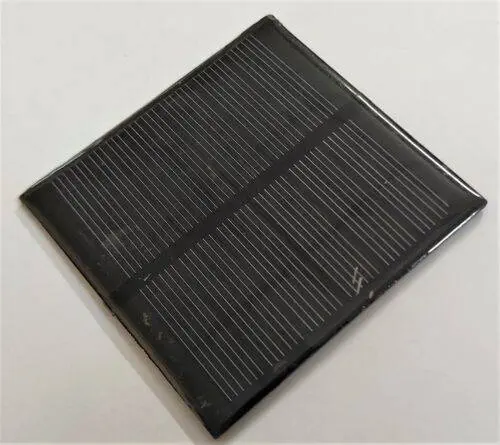Introductions of single axis solar tracker:
A solar tracker system that tracks sunlight based on its intensity is a popular Arduino project. It’s categorized into two main types: the single-axis solar tracker and the dual-axis solar tracker.
The single-axis solar tracker operates with a single motor, allowing movement along two dimensions. Conversely, the dual-axis tracker has the capability to rotate across four directions due to its two-axis movement.
A Preview image of Single axis solar tracker
Hello everyone, welcome back to Techatronic with Shahid and Adnan. We trust you’re all doing well. We’re thrilled to present an incredibly exciting project for you today – the Single Axis Solar Tracker project.
Ordinarily, solar panels remain fixed, always facing the direction of the rising sun. However, this positioning results in a reduced amount of incident light. Our remarkable solar tracker, on the other hand, operates differently. During the afternoon and evening, it dynamically adjusts to follow the sun’s path, optimizing light exposure and capturing a greater amount of solar energy.
What is a Single Axis solar tracker?
The single-axis solar tracker project stands as an excellent illustration of an electronics mini project. It has gained significant popularity in recent times.
This solar tracker system essentially aligns with the movement of sunlight. By implementing this mechanism, it optimizes the power harvested by solar panels through enhanced exposure to sunlight.
Featuring a solar panel, this system tracks light in two dimensions. As the sun ascends in the morning, the system adjusts in that direction and mirrors this movement for the evening’s descent.
The system dynamically follows the sun’s position to ensure optimal exposure, maximizing the solar power collected. Greater sunlight intensity directly correlates to increased power conversion into electricity by solar panels.
An LDR sensor is utilized within the solar tracker to detect and respond to varying light intensities.
How does it work? Working of single axis solar tracker
The single-axis solar tracker system incorporates servo motors enabling movement along a specific axis in two directions. When oriented, such as along the x-axis, it moves both in the positive (+x) and negative (-x) directions, typically within a range of 60 degrees in each direction.
Here’s how the project operates:
The system employs a light-dependent resistor (LDR) sensor, which alters the circuit’s resistance when exposed to light. Two LDR sensors are integrated into the circuit, positioned on opposing sides.
The motor responds to the LDR exhibiting lesser resistance, initiating movement in that particular direction. Each LDR sensor continuously transmits its output to the Arduino. Subsequently, the Arduino analyzes the data received from the LDR sensors and issues commands to control the servo motors accordingly.
PCBWay PCB Prototyping Services
The complete circuit has been set up on a breadboard. However, considering the inefficiency of breadboard assembly for this specific project, PCBWay presents Rapid PCB Prototyping tailored for research endeavors. I advocate for PCBWay as they enable you to receive your initial boards within a mere 24 hours, facilitating a swift commencement of your project.
The prototyping phase stands as a crucial period for engineers, students, and enthusiasts alike. PCBWay not only accelerates the production of your boards but also ensures precision and cost efficiency. This significantly reduces expenses and accelerates the development timeline for your electronic project.
PCBWay offers an array of PCB options, from 2 Layer boards to advanced HDI and flex boards. Despite their varied functionalities and intended applications, I’m impressed by the quality, timely delivery, and cost-effectiveness of the boards.
I trust that the information provided above sheds sufficient light on the workings of the single-axis solar tracker project.
Components Used in Single Axis Solar tracker
Certainly! Here’s a rephrased version of the components required:
– Atmega328P-based Arduino Uno board
– Two Light Dependent Resistors (LDR sensors)
– Two 10K Ohm Resistors
– Two Servo Motors
– Solar Panel
– Jumper wires
– Breadboard
Circuit Diagram for single axis solar tracker
Circuit diagrams created using Fritzing for a single-axis solar tracker assist in clarifying connections. If you encounter any obstacles, feel free to reach out to us in the comment section for assistance.
Connection Table of single axis solar tracker
| Arduino UNO | Servo Motor | ||
| D9 Pin | Out Pin | ||
| +5V | VCC | ||
| GND | GND | ||
| Arduino UNO | LDR 1 | LDR 2 | 10k ohm Resistor, 2 p |
| A0 Pin | Terminal 1 | Terminal 1 | |
| A0 Pin | Terminal 1 | Terminal 1 | |
| +5V | Terminal 2 | Terminal 2 | |
| GND | Terminal 2 |
Learn How to use Single axis solar tracker using Arduino code
// Single axis solar tracker
// Techatronic.com
#include //including the library of servo motor
Servo sg90;
int initial_position = 90;
int LDR1 = A0; //connect The LDR1 on Pin A0
int LDR2 = A1; //Connect The LDR2 on pin A1
int error = 5;
int servopin=9; //You can change servo just makesure its on arduino’s PWM pin
void setup()
{
sg90.attach(servopin);
pinMode(LDR1, INPUT);
pinMode(LDR2, INPUT);
sg90.write(initial_position); //Move servo at 90 degree
delay(2000);
}
void loop()
{
int R1 = analogRead(LDR1); // read LDR 1
int R2 = analogRead(LDR2); // read LDR 2
int diff1= abs(R1 – R2);
int diff2= abs(R2 – R1);
if((diff1 <= error) || (diff2 <= error)) { } else { if(R1 > R2)
{
initial_position = –initial_position;
}
if(R1 < R2)
{
initial_position = ++initial_position;
}
}
sg90.write(initial_position);
delay(100);
}

